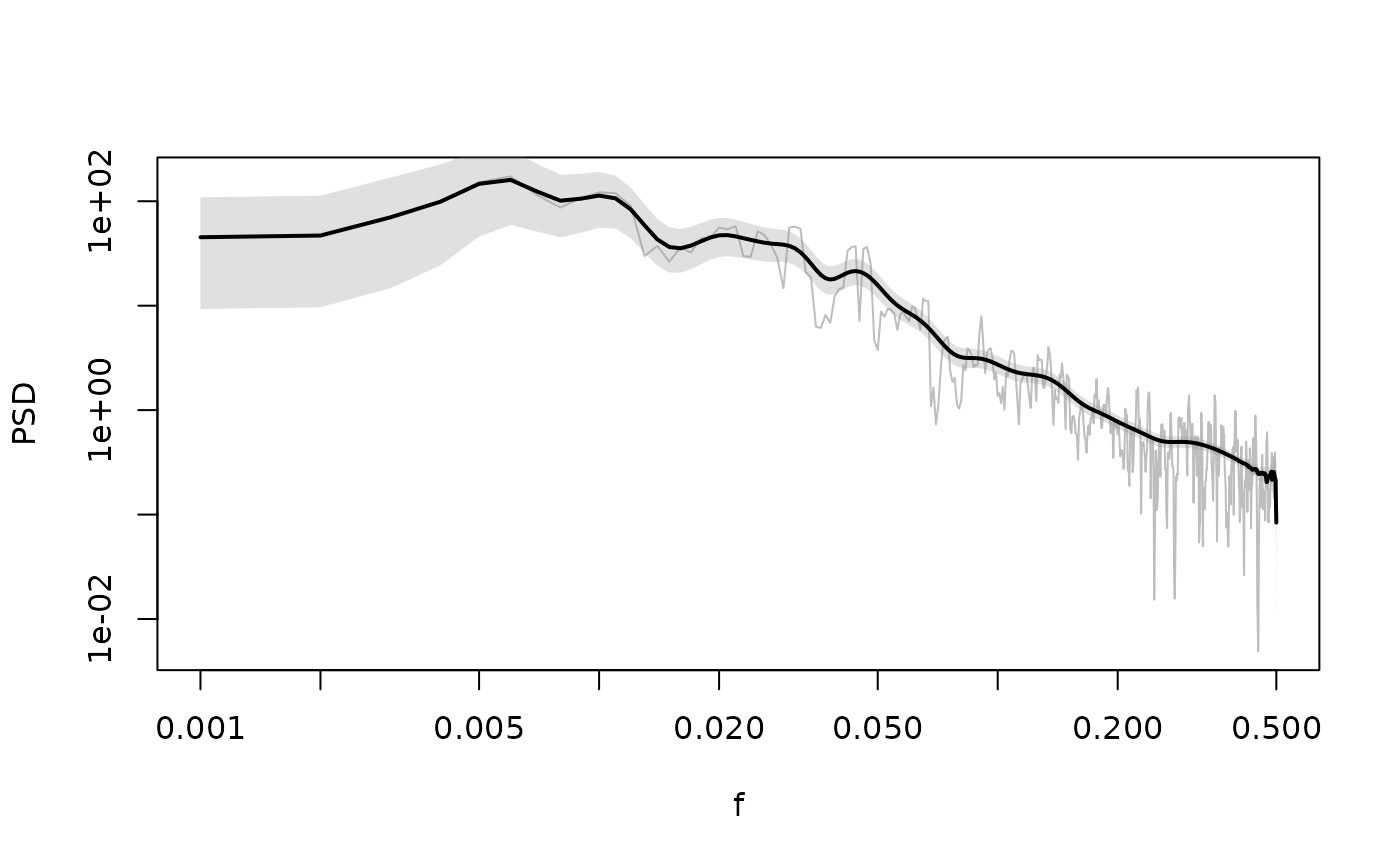MTM spectral estimator
SpecMTM.Rdcalls spec.mtm from library multitaper
Usage
SpecMTM(
timeSeries,
k = 3,
nw = 2,
nFFT = "default",
centre = c("Slepian"),
dpssIN = NULL,
returnZeroFreq = FALSE,
Ftest = FALSE,
jackknife = FALSE,
jkCIProb = 0.95,
maxAdaptiveIterations = 100,
plot = FALSE,
na.action = na.fail,
returnInternals = FALSE,
detrend = TRUE,
bPad = FALSE,
...
)Arguments
- timeSeries
A time series of equally spaced data, this can be created by the ts() function where deltat is specified.
- k
a positive integer, the number of tapers, often 2*nw.
- nw
a positive double precision number, the time-bandwidth parameter.
- nFFT
This function pads the data before computing the fft. nFFT indicates the total length of the data after padding.
- centre
The time series is centred using one of three methods: expansion onto discrete prolate spheroidal sequences ('Slepian'), arithmetic mean ('arithMean'), trimmed mean ('trimMean'), or not at all ('none').
- dpssIN
Allows the user to enter a dpss object which has already been created. This can save computation time when Slepians with the same bandwidth parameter and same number of tapers are used repeatedly.
- returnZeroFreq
Boolean variable indicating if the zeroth frequency (DC component) should be returned for all applicable arrays.
- Ftest
Boolean variable indicating if the Ftest result should be computed and returned.
- jackknife
Boolean variable indicating if jackknifed confidence intervals should be computed and returned.
- jkCIProb
Decimal value indicating the jackknife probability for calculating jackknife confidence intervals. The default returns a 95% confidence interval.
- maxAdaptiveIterations
Maximum number of iterations in the adaptive multitaper calculation. Generally convergence is quick, and should require less than 100 iterations.
- plot
Boolean variable indicating if the spectrum should be plotted.
- na.action
Action to take if NAs exist in the data, the default is to fail.
- returnInternals
Return the weighted eigencoefficients, complex mean values, and so on. These are necessary for extensions to the multitaper, including magnitude-squared coherence (function mtm.coh in this package). Note: The internal ($mtm) variables eigenCoefs and eigenCoefWt correspond to the multitaper eigencoefficients. The eigencoefficients correspond to equation (3.4) and weights, eigenCoefWt, correspond to sqrt(|d_k(f)|^2) from equation (5.4) in Thomson's 1982 paper. This is because the square root values contained in eigenCoefWt are commonly used in additional calculations (example: eigenCoefWt * eigenCoefs). The values returned in mtm$cmv correspond to the the estimate of the coefficients hat(mu)(f) in equation (13.5) in Thomson (1982), or to the estimate of hat(C)_1 at frequency 1 in equation (499) form Percival and Walden (1993)
- detrend
logical, detrend timeseries before estimating the spectrum
- bPad
if FALSE (the default) nFFT is set to the length of the timeseries
- ...
additional arguments to multitaper::spec.mtm
See also
Other functions to estimate power spectra:
SpecACF()
